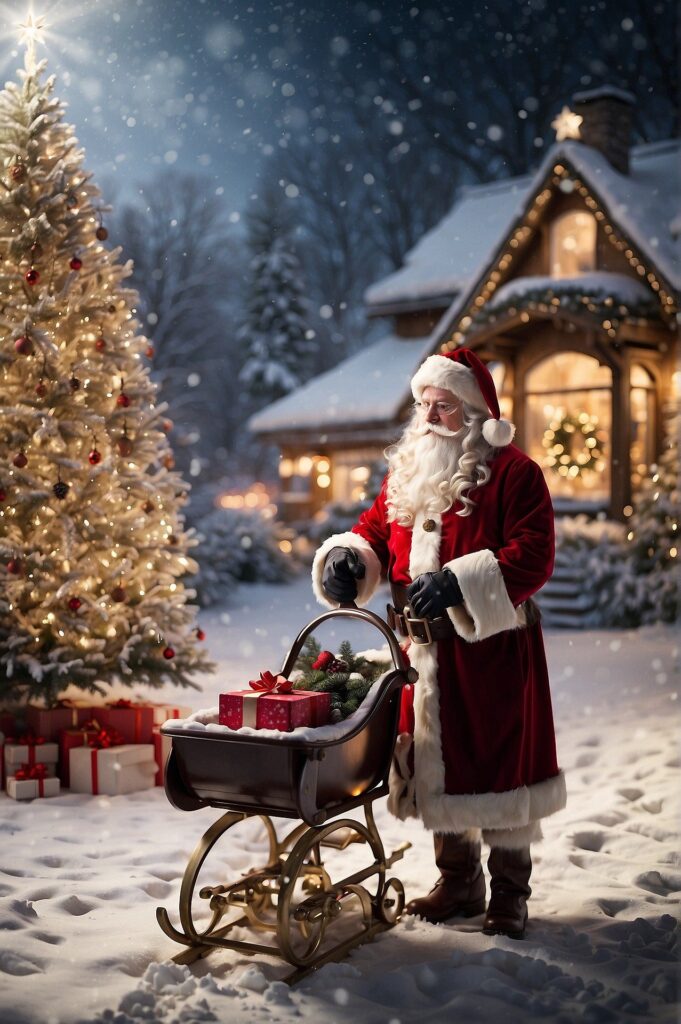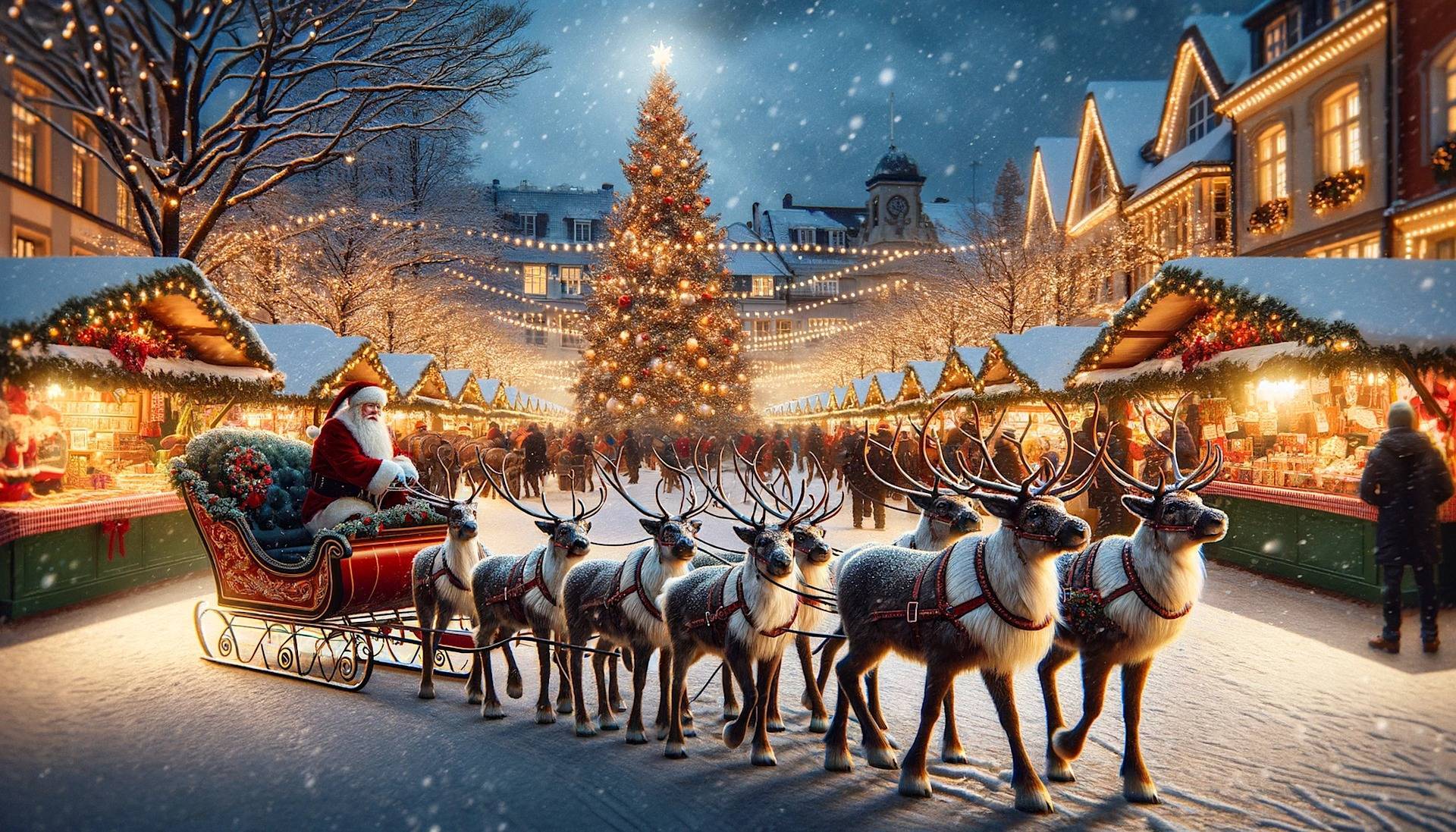Immersed in the glow of twinkling lights and the joy of gift exchanges, Christmas is more than just a holiday; it’s a universal celebration that carries a rich, vibrant history that transcends geographical and cultural boundaries.
This special occasion embodies many traditions that, while diverse and varied, ultimately coalesce into a harmonious blend of unyielding spirit and timeless reverence. Drawing from an amalgamation of ancient cultural practices, religious acknowledgments, and modern customs, Christmas has grown to become a beacon of unity, generosity, and familial intimacy. Beyond the shimmering ornaments and sumptuous feasts lies a story of evolution and significance that resonates deeply in the hearts of millions worldwide.
The Historical Roots of Christmas
As your home twinkles with fairy lights and the aroma of baked cookies wafts through the air, it’s clear that the Christmas season is upon us! With this wonderful time of year, comes the desire to delve a little deeper into the fascinating tradition of Christmas. The intriguing origins of this hallowed holiday offer valuable insight if we take a glance back to the past.

It all began over 2,000 years ago with the Winter Solstice. Ancient Roman Pagans celebrated Saturnalia, a feast honoring the agricultural god Saturn. During Saturnalia, social order took a hiatus. Businesses and schools closed, and even slaves could participate in the festivities alongside their masters. This celebration, including singing, feasting, and gifting, set the foundation for many of our modern traditions.
As Christianity spread across Rome around the 4th century, church leaders aimed to replace the pagan feast with a religious holiday. December 25th was chosen to celebrate the birth of Jesus Christ. Despite the lack of biblical reference to this exact date, it conveniently coincided with Saturnalia and the other cultural events surrounding the Winter Solstice. This transformation helped the spread of Christianity in a pagan-centered Rome.
Fast forward to America in the 19th century and Christmas took on an entirely new dimension, thanks to two significant contributors: Queen Victoria and Charles Dickens.
On seeing a sketch in 1848 of Queen Victoria and Prince Albert celebrating the holiday around a Christmas tree, Americans instantly fell in love with the custom. The tree adorned with decorations and surrounded by presents enticed the nation, and the tradition quickly found its roots in American homes.
Simultaneously, Charles Dickens published “A Christmas Carol”. This story painted a contrasting image of Christmas, focusing on the spirit of giving, thankfulness, and redemption. It resonated deeply with readers, embedding itself into the very ethos of modern-day culture.
More recent traditions like Christmas cards and Santa Claus were born via commercialization. Sir Henry Cole in the UK created the first Christmas card in 1843 to encourage people to use his new postal service. Meanwhile, the modern image of Santa Claus emerged in the late 19th and early 20th century through works of illustrators like Thomas Nast and Norman Rockwell.

The Christmas season also presents the perfect opportunity for families to create new traditions unique to them. Perhaps it can be a themed Christmas dinner, a family charity activity, or simply a game night by the fireside. The critical part is that everyone contributes to the planning and execution, promoting collaboration, understanding, and mutual respect. Repeating these activities year after year will form a thread of shared memories to be looked back on fondly, strengthening the family bond.
In a nutshell, the evolution of Christmas traditions has seen influences from pagan festivals, Christianity, European monarchs, notable authors, and clever marketing strategies. With festivities around the world, each interpretation of Christmas involves a unique blend of traditions that creates a joyous tapestry of cultural expression.
So, this festive season, as we sing carols, exchange gifts, and relish the time with our loved ones, let’s remember the rich tapestry that forms the origins of our beloved traditions. While decorating the Christmas tree with joyous hearts and kindness in our eyes, it’s breathtaking to reflect on how a holiday so cherished has been shaped and evolved over millennia. Celebrating Christmas transcends just the states; it’s an international rendezvous of love, joy, celebration, and good cheer.
The richness of its past, the warmth of its present, and the promise that every baked cookie, every shared gift, and every hearty ‘Ho, Ho, Ho’ signals a celebration not just of a season, but a time-honored tradition that connects us as a global family.
The Modern Day Christmas: Significance and Rituals
Christmas! Just saying the word evokes a feeling of joy and warmth. But behind the joyful cheer, festive music, sumptuous foods, and beautifully decorated trees, there lies a story of evolution that has led to the modern-day Christmas we now know and love. But how exactly has it evolved over centuries? Our story takes an intriguing turn from where we left off – the 19th-century influence of Queen Victoria and Charles Dickens on Christmas, the commercialization of the holiday, and the blend of traditions seen across various cultures.

As we moved into the 20th century, Christmas saw the influence of changing societal norms and structures. Following WWII, a time of scarcity and hardship, the holiday was transformed once more. An economic boom led to new levels of individual material prosperity. As a result, gift-giving became a predominant part of the celebration, further intensifying the commercial aspect of Christmas.
The tradition of the Christmas tree that originated in Germany, significantly grew in popularity during this period, particularly in the United States. Decorating the tree with our loved ones has become an important part of our celebration and bonding time with room for artistic creativity.
In the digital age, we’ve also incorporated Christmas into our online lives. Social media platforms become a flurry of Christmas-themed posts and e-cards, with people sharing their festivities with friends and family across the globe. Technology has granted us a way to maintain the spirit of togetherness even from afar.
Moreover, Christmas isn’t solely a Christian celebration anymore. People of different faiths and backgrounds now enjoy the holiday, often incorporating their own unique twists. It has turned into a global festive season, unifying cultures around the world with its underlining themes of love, peace, togetherness, and generosity.
In our contemporary world, we’re also beginning to see a shift towards more responsible and sustainable celebrations. This ranges from buying locally-produced gifts and making hand-crafted decorations to cut down on waste, to serving meals made with locally-grown ingredients.
Yet, amidst all these changes, the essence of Christmas remains remarkably consistent. The universal sentiments of joy, peace, goodwill, and a dedication to spending time with loved ones continue. It’s this enduring spirit that makes our modern, evolving Christmas a cherished time of year.

As we approach another Christmas season, it’s important to remember that while the ways in which we celebrate may change, the values that Christmas represents continue to inspire us – signaling hope, peace, and unity in our homes, communities, and across the globe. Remember to spread love, share delight, and sparkle this Christmas season. After all, that’s what Christmas is all about.
The Role of Christmas in Strengthening Family Bonds
While the origins and historical paths of Christmas we’ve explored are fascinating, let’s delve into the heart of this holiday season: using it to strengthen bonds and create lasting family memories. As many of us know, Christmas is more than just presents and decorations; it’s a season of love, unity, family, and shared experiences.

Every family has its Christmas traditions, handed down through generations. These traditions, whether decorating a Christmas tree together, baking holiday treats, or singing carols, are more than just enjoyable activities; they take on a deep meaning, fostering connection and togetherness within the family. Family traditions offer the chance to bond, create unique memories, and give everyone a sense of belonging. Participating in age-old family customs offers a comforting routine amidst the whirl of the holiday season and serves as an enduring reminder of shared family values.
Apart from traditions, communication is another integral part of strengthening family bonds. During this festive season, family discussions can be centered around the essence of Christmas, understanding, appreciating, and continuing its enduring values. This could also extend to acknowledging how Christmas is celebrated globally, embracing cultural differences in traditions, and realizing the universal theme of love and unity that Christmas spreads.
With the rise of the digital age and social media, virtual Christmas celebrations have started to form part of our holiday tradition. Families separated by distance can still share their holiday customs over video calls, connecting and creating memories in a different yet meaningful way. Digital platforms also offer countless opportunities for interactive family activities, such as virtual games or online cooking sessions.
Last of all, Christmas is a season of giving, which brings with it a chance to teach the younger generations about responsibility and sustainability. This could involve choosing environmentally friendly decorations, moderating consumption and waste, or contributing to charitable causes. Such practices not only support responsible living but also cultivate empathy and a sense of responsibility in children.
As the festive season lands upon us, remember the true essence of Christmas: a season to spread love, unity, and goodwill. With the right blend of tradition, communication, and joyful activities, Christmas can serve as a precious time to strengthen family bonds and form lasting memories. At the end of the day, the love and cohesion within a family are the most beautiful Christmas gifts one could ask for.
Conclusion
This journey through the fascinating history and enduring significance of Christmas reveals why this holiday holds such a special place in our lives. More than just a festival, it serves as an annual reminder of unity, love, and generosity—a testament to the timeless values shared among humanity. Delving into the traditions and rituals that color our modern-day festivities highlights not only the diversity that makes our celebrations unique but also the shared element of communal spirit that echoes the very essence of Christmas.
As we continue to celebrate and foster this spirit, let us remember that the true value of Christmas extends beyond the festive decorations and gift exchanges, residing instead in the love, understanding, and bonds we share and strengthen during this captivating season.

Hi, I’m Nathan Cross, a writer and avid reader who loves crafting articles for newspapers and online platforms. Words are my passion, whether I’m telling stories, sharing insights, or sparking conversations. When I’m not writing, you’ll find me lost in a book or out on the baseball field, enjoying the game that keeps me grounded. Writing, reading, and baseball—these are the things that define me.




